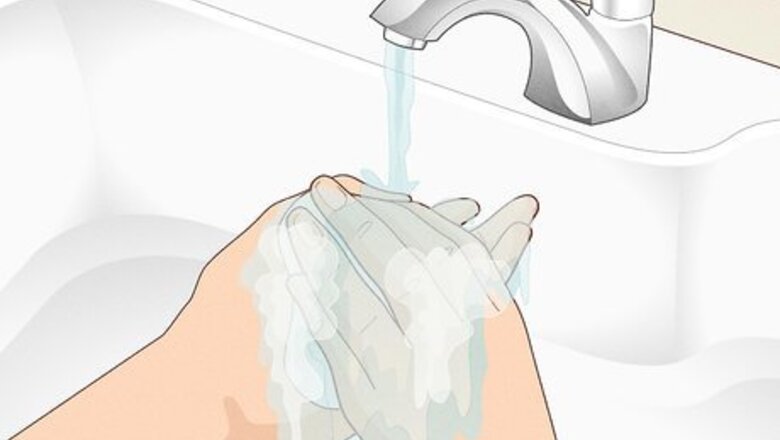
views
Using a Toothbrush Properly
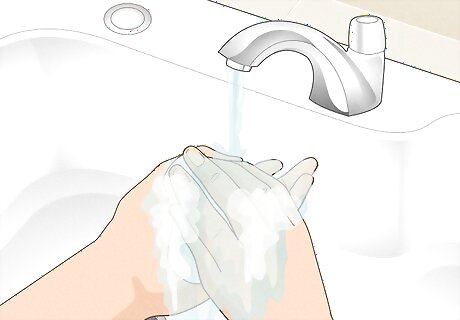
Wash your hands before and after handling your toothbrush. This might seem obvious, but it’s super easy to forget to wash up when you’re in a hurry, especially in the morning. To wash your hands thoroughly, wet your hands with water, then apply soap. Scrub your hands for 20 seconds before rinsing under a stream of water. Dry your hands on a clean towel. Your hands can contain germs that might transfer to your toothbrush if you don't wash them.
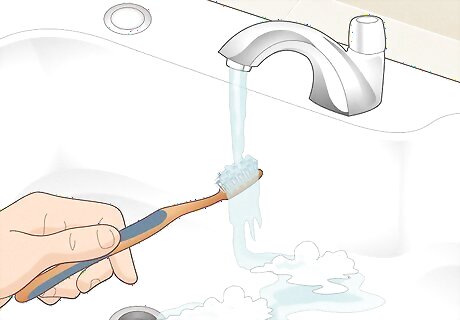
Rinse your toothbrush in running tap water after every use. After you finish brushing your teeth, put the head of your toothbrush under the running tap. Continue to rinse the brush until it looks clean. Then, place it in your toothbrush holder to dry. You don’t need to use soap or mouthwash to clean your toothbrush. Just use water. Don’t dry your toothbrush on a towel because the towel may contain germs. Air drying is the best option.
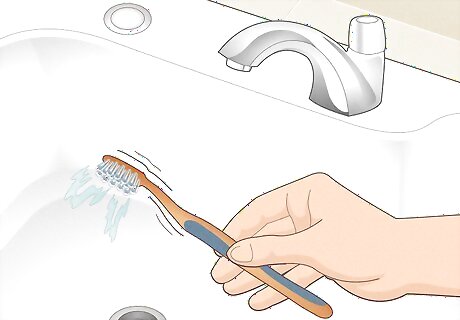
Shake your toothbrush dry after rinsing it. A wet toothbrush is the perfect environment for bacterial growth. To help your bristles dry as fast as possible, vigorously shake your toothbrush after you rinse it. This will remove much of the excess water from the brush. It’s okay if your toothbrush is still a bit damp after you shake it.

Don’t share toothbrushes because you might get sick. When you share a toothbrush, you are also sharing bodily fluids and germs, which might lead to an infection. While the risk of getting sick is low, it’s best to play it safe. Get your own toothbrush and don’t share it with anyone. Keep extra toothbrushes in your home in case someone needs to borrow one. That way you can provide them their own toothbrush instead of sharing yours.
Storing Your Toothbrush

Stand your toothbrush upright in an open container so it can air dry. It’s important for air to circulate around your toothbrush so it dries quickly. Additionally, placing it upright helps drain away the excess water, toothpaste, and debris left on it after rinsing. Place your toothbrush in a holder or cup that keeps it upright. Check out the scum on the bottom of your toothbrush holder. This is what flows away from your toothbrush.
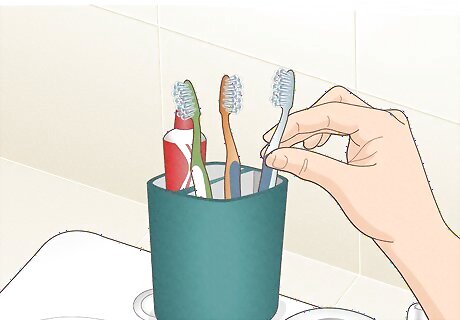
Keep individual toothbrushes separate from each other. It’s okay to store more than one toothbrush in the same holder, so don’t worry about getting each household member their own toothbrush cup. However, make sure the toothbrushes aren’t touching each other. If they do, bacteria and bodily fluids might transfer from one toothbrush to another. If you’re using a holder made for toothbrushes, you probably won’t have to worry about this. Most toothbrush holders are designed to angle the toothbrushes away from each other.
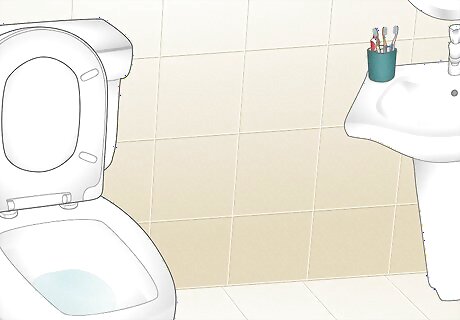
Place your toothbrush holder away from your toilet. When you flush your toilet, tiny water particles that contain germs, including fecal matter, spray into the air. Unfortunately, these particles may land on your toothbrush if it’s too close to the toilet. While the risk of getting sick from this is super low, you probably don’t want toilet germs on your toothbrush. Play it safe by keeping your toothbrush holder away from your toilet. It also helps to put the toilet seat cover down before you flush.
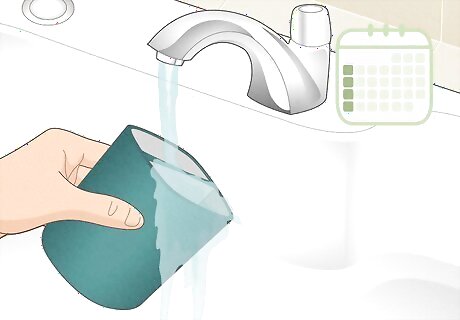
Clean your toothbrush holder once a week. Bacteria that accumulates on the toothbrush holder can be transmitted to the brush, and then to your mouth. Wash your toothbrush holder with dish soap and warm water, then dry it with a clean towel. Alternatively, place your toothbrush holder in the dishwasher if it’s dishwasher safe. Remove the lid if your toothbrush holder has one. If your toothbrush holder is installed on the wall, wipe it down with a disinfectant cloth. Follow the directions on the disinfectant container to make sure you leave the solution on the toothbrush holder long enough to sanitize it. Then, wipe the holder clean with a wet cloth and dry it with a clean cloth before putting your toothbrush back in it.
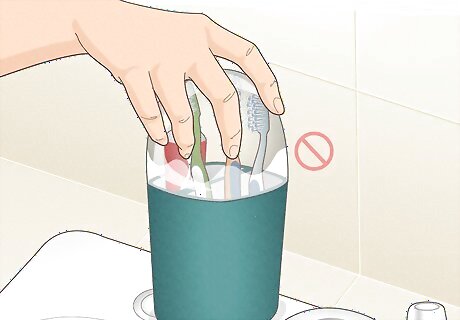
Do not store your toothbrush in a closed container at home. You might want to put your toothbrush in a closed container to protect it, but this is a bad idea. According to the American Dental Association (ADA), keeping your toothbrush in a closed container creates the perfect environment for bacteria to grow on it. Always store your brush upright. It’s okay to put your toothbrush in a protective case for travel. However, wash the case with soap and warm water once you return home. Then, dry it with a clean cloth.
Sanitizing and Replacing Your Toothbrush
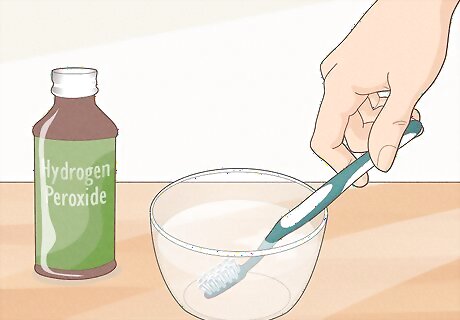
Soak your toothbrush in hydrogen peroxide or mouthwash to clean it (optional). While there’s no evidence that soaking your toothbrush will keep it cleaner, the ADA says some soaking methods are effective at killing bacteria in your bristles. Use either 3% hydrogen peroxide or mouthwash as a sanitizing soak. Pour the product into a clean cup, then insert your toothbrush with the bristles facing down. Soak the toothbrush for about 20 minutes. There’s really no reason to soak your toothbrush, and the CDC warns you might accidentally spread germs while soaking a toothbrush. Always change out the hydrogen peroxide or mouthwash after every soak, and don’t soak more than 1 toothbrush in the same solution. You might see tips online about microwaving your toothbrush or putting it in a dishwasher. The ADA recommends against this, as the heat can damage your toothbrush.
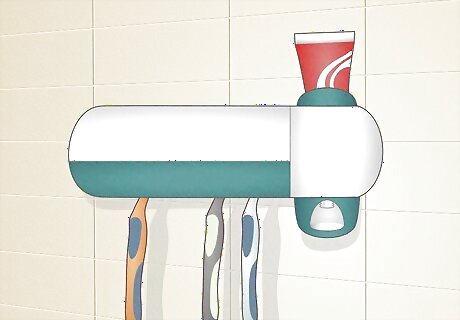
Try a UV toothbrush sanitizer if you’re very worried about germs. Studies show that an ultraviolet (UV) light sanitizer can disinfect a toothbrush. While the ADA says sanitizers aren’t necessary, they can be effective. Look for a sanitizer that’s approved by the U.S. Food and Drug Administration (FDA). Read and follow all instructions that come with your toothbrush sanitizer. You might use a toothbrush sanitizer if you have a weakened immune system and tend to get sick more often.
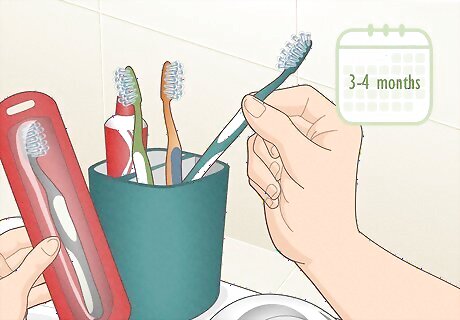
Replace your toothbrush every 3 to 4 months or earlier if it’s worn out. Your toothbrush won’t be as effective at cleaning your teeth if the bristles are worn. However, you likely don’t need to worry about extra germs on an old toothbrush. Keep track of how long you’ve been using your toothbrush, or create a habit of changing your toothbrush at the start of the month every 3 to 4 months. For instance, you might change out your toothbrush the first day of January, April, July, and October. If you have an electric toothbrush, you just need to replace the head. Expert Answer Q When should a child replace their toothbrush? Cristian Macau, DDS Cristian Macau, DDS Doctor of Dental Surgery Dr. Macau is a Doctor of Dental Surgery based in London, England. Dr. Macau is an oral surgeon, periodontist, and aesthetician at Favero Dental Clinic where he is known for his cosmetic dentistry and facial aesthetics work. He is actively involved in scientific research in the field of dentistry and he received his DDS from Carol Davila University of Medicine in 2015. Cristian Macau, DDS EXPERT ADVICE Answer from Cristian Macau, DDS: Childrens' toothbrushes for kids have soft bristles and tend to get frayed faster than adult brushes. Check if the bristles are bent or changed at all from their normal shape. If they are, change the toothbrush. Usually, kids require a new toothbrush after a month and a half.
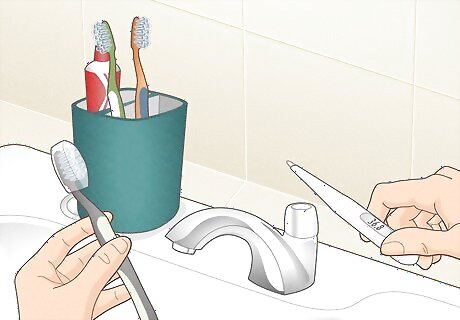
Switch to a new toothbrush after recovering from an illness. When you’re sick, germs can linger in your bristles. Additionally, they might spread to other surfaces your toothbrush touches. To be on the safe side, get a new toothbrush when you start feeling better. For instance, get a new toothbrush immediately after recovering from a cold or the flu.



















Comments
0 comment